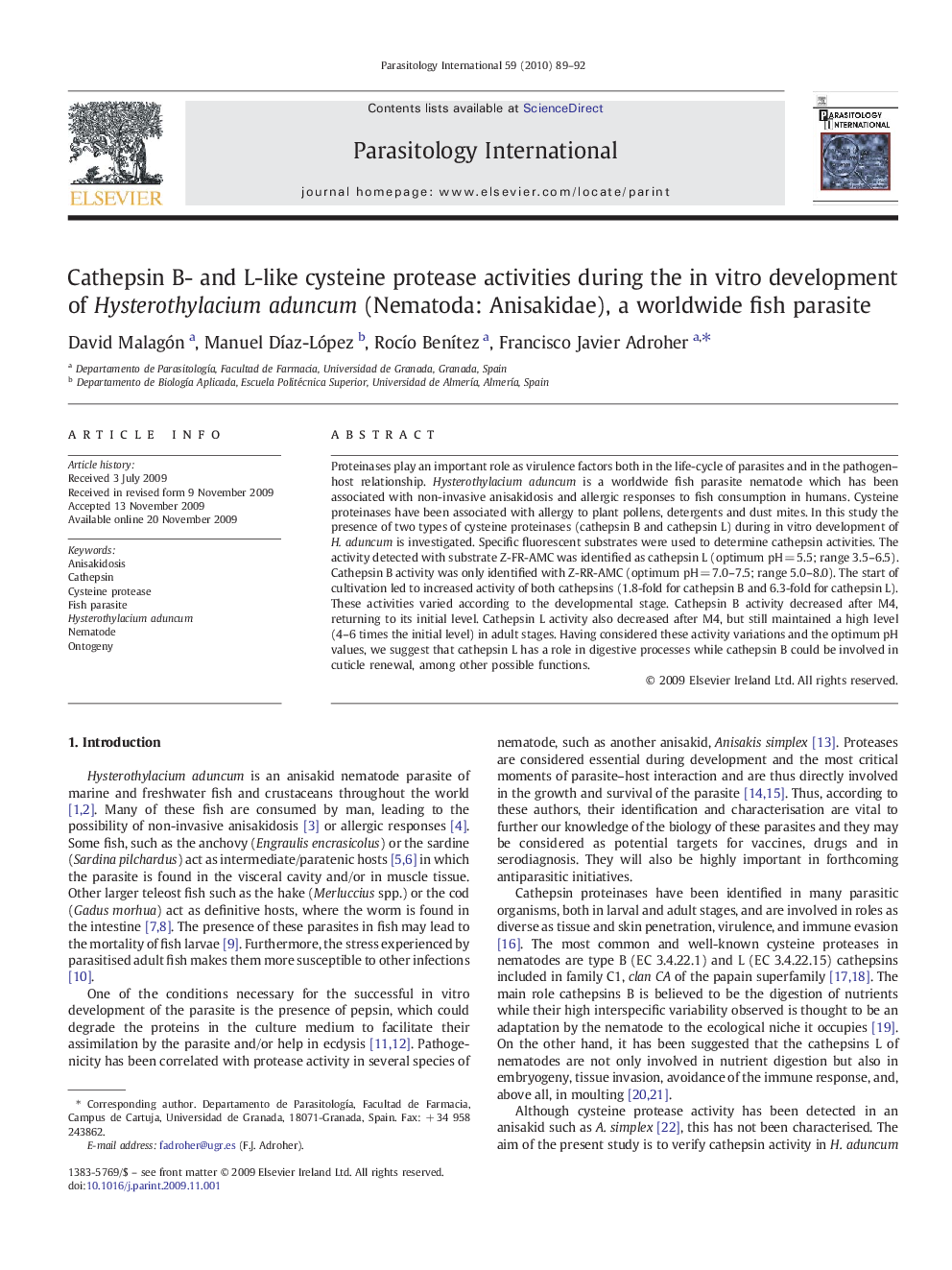| Article ID | Journal | Published Year | Pages | File Type |
|---|---|---|---|---|
| 3418219 | Parasitology International | 2010 | 4 Pages |
Proteinases play an important role as virulence factors both in the life-cycle of parasites and in the pathogen–host relationship. Hysterothylacium aduncum is a worldwide fish parasite nematode which has been associated with non-invasive anisakidosis and allergic responses to fish consumption in humans. Cysteine proteinases have been associated with allergy to plant pollens, detergents and dust mites. In this study the presence of two types of cysteine proteinases (cathepsin B and cathepsin L) during in vitro development of H. aduncum is investigated. Specific fluorescent substrates were used to determine cathepsin activities. The activity detected with substrate Z-FR-AMC was identified as cathepsin L (optimum pH = 5.5; range 3.5–6.5). Cathepsin B activity was only identified with Z-RR-AMC (optimum pH = 7.0–7.5; range 5.0–8.0). The start of cultivation led to increased activity of both cathepsins (1.8-fold for cathepsin B and 6.3-fold for cathepsin L). These activities varied according to the developmental stage. Cathepsin B activity decreased after M4, returning to its initial level. Cathepsin L activity also decreased after M4, but still maintained a high level (4–6 times the initial level) in adult stages. Having considered these activity variations and the optimum pH values, we suggest that cathepsin L has a role in digestive processes while cathepsin B could be involved in cuticle renewal, among other possible functions.
